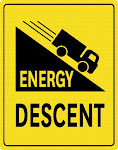In summary: The Ancestral Biomedical Environment
Sunday, November 7, 2010
Since agriculture and animal husbandry first appeared, perhaps 10,000 years ago, hemoglobinopathies and adult lactose tolerance are almost the only generally acknowledged genetic modifications. On the other hand, our lifestyle has changed radically: Nutrition, physical activity, reproductive experience, psychosocial relations, microbial interactions, and toxin/allergen exposure are all vastly different now from what they were for ancenstral humans and prehumans during the period when our primary genetic makeup, including those factors relevant to endothelial health and disease, was selected... The resulting discordance or mismatch between our genes and our modern lives is a likely contributor to many common chronic diseases and probably various forms of endothelial dysfunction... More here.
Endothelial dysfunction is a systemic pathological state of the endothelium (the inner lining of our blood vessels) and can be broadly defined as an imbalance between vasodilating and vasoconstricting substances produced by (or acting on) the endothelium. Normal functions of endothelial cells include mediation of coagulation, platelet adhesion, immune function, control of volume and electrolyte content of the intravascular and extravascular spaces. Endothelial dysfunction can result from and/or contribute to several disease processes, as occurs in septic shock, hypertension, hypercholesterolaemia, diabetes as well from environmental factors, such as from smoking tobacco products and exposure to air pollution. More here.








0 comments:
Post a Comment